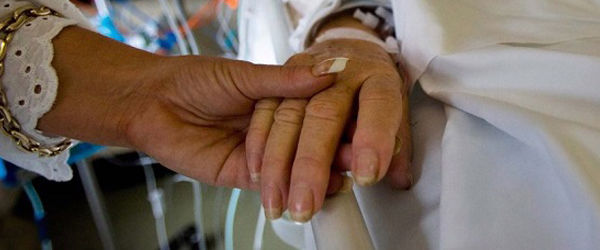At around noon the group — including Father Richard Hoynes, parish administrator, and other adult chaperones — celebrated Mass on what remains of the concrete foundation of the barrack chapel.The celebration of the liturgy marked the first time since the World War II era camp closed that a Mass was held on the site. More significantly, however, is that the grandparents of these youth, and the parents of the chaperones, were with them in a special way, for many of them were interned at Manzanar (or perhaps at Poston, Arizona, or Heart Mountain, Wyoming, or another camp that housed Japanese Americans during the war).Next year the parish of these Youth Group members will celebrate its centennial — 100 years since their great-great-grandparents laid the foundations for the parish buildings, raised and painted and plastered the walls, opened classroom doors, and provided a spiritual home for those who migrated here from Japan. “This place is steeped in history,” notes Father Hoynes. It succeeded, he says, because of parishioners’ resiliency and faith. “Through no fault of their own, they were forced into camps and had to carve a place out of practically nothing. And through it all they kept their faith.” Father Hoynes has a special connection to the St. Francis Xavier community. His Irish-German father met and married his Japanese mother in post-Korean War Japan, and he was born when his father was stationed in the Philippines. Thus he speaks with authority when he declares, “The Japanese are very resilient, and they have learned to adapt over and over again.” He also credits the Maryknoll priests and religious who came to their aid. “God bless the Maryknolls,” he says of the order which, during WWII, ministered faithfully to their parishioners wherever they might be. Nor have the Maryknoll priests and sisters been forgotten, even though the last Maryknoll members withdrew from the parish in 1995.The parish remains active today. Its groups and ministries include: Boy Scouts (directed by George Takahashi), Marian Prayer Group (led by Angela Nakamura), Ladies Guild, Karate (three evenings a week), Ichebana Flower Group (whose teacher most often prepares the main floral display for the church) religious education (coordinated by DRE Anna Sobarzo) and parish council (with six English-speaking and six Japanese-speaking members).Many parishioners have one parent who is Japanese and another parent who is Hispanic, Filipino or Irish. Thus the parish registry includes names like Beal, Moreno, Choi and Hoynes, interspersed with Japanese surnames. Most of all, there is a powerful blend of devotion to family, love of faith and a special reverence for history and those in their families who have been so deeply affected by it. “It is the roots, the real strong roots — they are steeped in the blood of earlier generations,” notes Father Hoynes. “How they stuck it out and carved this place out of practically nothing — I admire that.”{gallery width=100 height=100}gallery/2011/0701/xavier/{/gallery}

